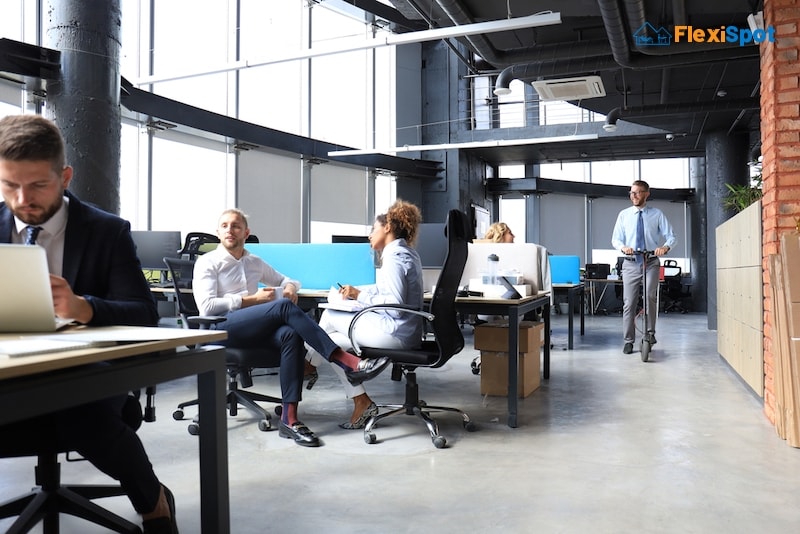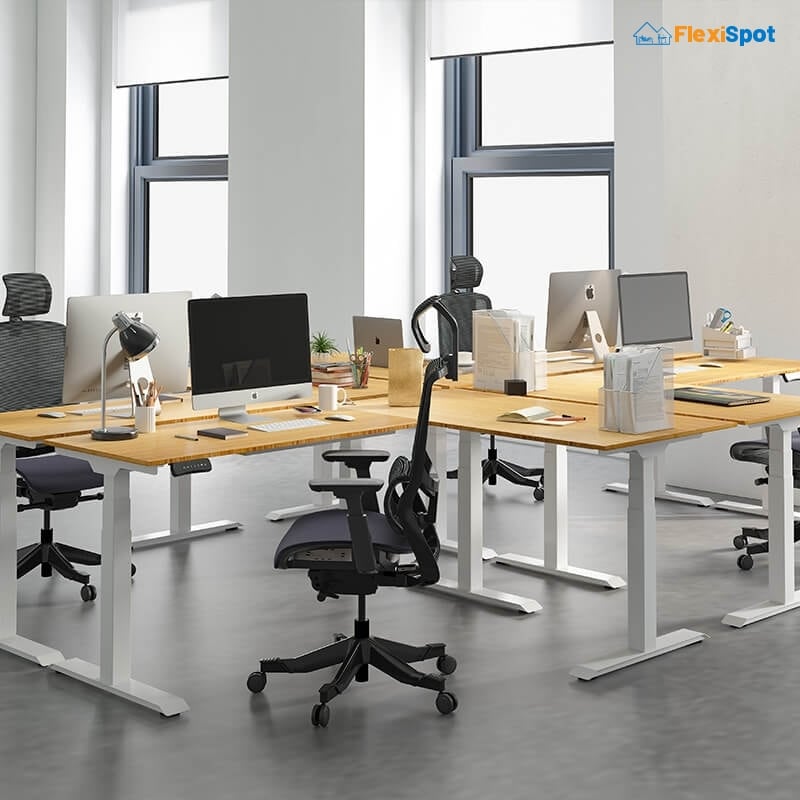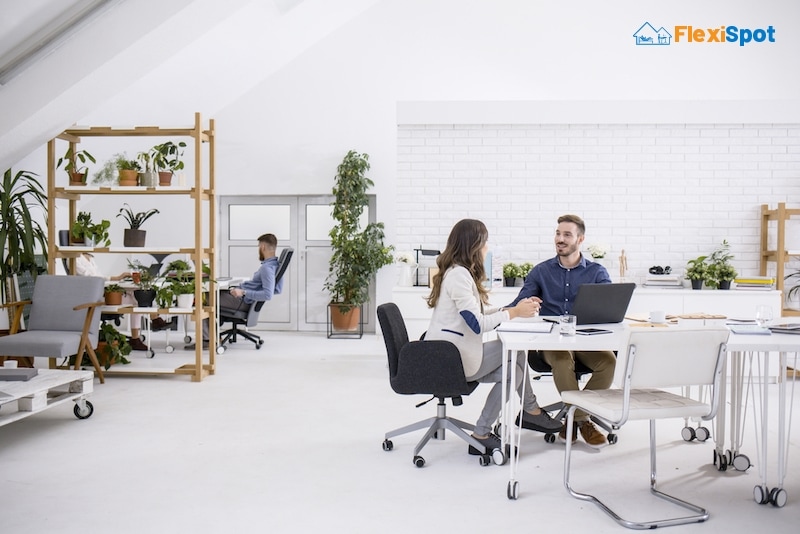Have you ever felt uncomfortable in a certain place despite having your loved ones around? Maybe it was a fancy restaurant you went to or a club with your friends. You noticed them having a great time but felt uneasy, suffocated, and extremely anxious yourself. That’s because your brain didn’t accept it as a place for you. Now that’s something that you may not be able to wrap your head around, but fret not; that’s what we’re going to explore today!
There’s a strong relationship between neuroscience and the environment. Some places make you feel happy and elated, while others make you want to run and never return. The vibe and design of a place have an impact on how your brain processes the environment and then signals you to feel a certain emotion.
If you don’t feel like going to the office, it’s probably because of your office design. Not many employers realize that the environment they provide their employees will have an impact on their productivity, efficiency, and morale.
This blog post is focused entirely on how workplace design and neuroscience are related and how the design of your office space affects the employees' mood, morale, and efficiency.
Functionality vs. Aesthetics – The Science of Neuroaesthetics
Most office spaces are designed to be functional. The offices are usually closed spaces where there’s not much inflow of natural light. The furniture usually comprises chairs and unattractive workstations. Employers just focus on providing their employees a place to work without paying much heed to aesthetics.
The most common office design features cubicles in an open space where all employees can interact with each other. According to employers, the better the interaction and communication between employees, the more efficiently they’ll be able to work. While that’s true, what most employers fail to understand is that everyone isn't comfortable with working in a shared space. Some people work better in a private space. In fact, certain job roles require the worker to be fully focused, and that’s not quite possible when you’re sitting with numerous other workers in a common space. In such cases, the employers must work on improving the office design so it makes employees feel comfortable and helps them focus on their work better.
While improving the office design to cater to the employees’ comfort needs is vital, it’s also important that an employer works on the level of aesthetics. There’s a thing called Neuroaesthetics.
Neuroaesthetics is a branch of experimental science that combines the psychological (neuro) aspect with aesthetics and revolves around the study of how aesthetics affect the psychology of an individual. According to Neuroaesthetics, some colors can improve the productivity and efficiency of employees, the height of the ceiling can impact the problem-solving capabilities, and the arrangement of work desks can affect the confidence level. To make sure the employees are comfortable at work and feeling their best physically and mentally, many employers hire ergonomists and neuroscientists for their office design teams that only had architects in the past.
How Office Designs Affect the Employees Psychologically?
Now that you have a rough idea of how the office space design affects employee efficiency and productivity, let’s dig in deeper and understand the psychological impact of office design on the workers.
Privacy
Some individuals are able to work more efficiently in privacy, while others like to be around people. If you make an introvert sit with other team members, they won’t be comfortable. They’ll be uneasy all the time, which will significantly impact their productivity. Similarly, an extrovert won’t enjoy working in a private office space where they’ve got nobody to talk to. Modern office design should be versatile in the sense that it can cater to all employees' preferences.
Instead of assigning designated workstations, the office should have a mix of workstations in an open hall and some private cubicles. That way, employees who wish to work in silence can choose a private cubicle, and those who like to work in a team can arrange themselves in the shared workspace. As long as the employees feel happy and comfortable, they’ll be able to deliver to the best of their potential.
Ergonomics
Did you know that ergonomics can affect how a person feels? If a person isn’t comfortable, they’ll feel uneasy and won’t be attentive mentally. This, of course, impairs their ability to work efficiently. Imagine being on a bus to your favorite picnic spot with scenic beauty along the way. That sounds pleasant, doesn’t it? Now, imagine yourself sitting in the same bus, going to the same destination, only that the seat is broken and extremely uncomfortable. Would that make the journey pleasant? You’ll feel irritated and won’t stop wishing for the journey to come to an end. That’s exactly the difference an ergonomic workplace would make. Provide your employees an ergonomic work environment with ergonomic furniture like L-Shaped Standing Desk E4L and ergonomic chairs.
Familiarity with the Environment
If your office design is such that there’s absolutely no connection between the employees, there will be no sense of emotional safety. If an employee doesn’t feel safe, they can’t really perform at their most productive self.
It’s important for an employer to design the office such that employees can be around one another and develop a connection with each other without imposing the rule of being socially active. This way, the employees will be able to feel comfortable at work, and as you know by now, the more comfortable employees are at work, the more productive they will be.
How to Make Your Workplace One that Ensures Employees’ Happiness?
Unhappy employees cost businesses millions of dollars every year. If the employee isn’t happy at work, they’re highly likely to leave. The millennial generation is often referred to as the hopper generation. If they don’t feel good about a job, they’ll hop to a new opportunity. This can cost a company a lot as they’ll have to go through the entire recruitment process again.
The question that most employers are seen asking today is how to ensure that the employees are happy.
Now, many employers have started realizing that their workplace design and neuroscience are closely related. If the office design doesn’t ensure employee satisfaction and happiness, their productivity and efficiency will take a blow. If you’re an employer who wants to modify and improve the workplace design to help the psychological and emotional well-being of your employees, the following tips will help you big time.
Offer As Much Flexibility As You Can
The millennial generation is a tough bunch to deal with. They prioritize their happiness and comfort and prefer working in places where their needs are put first, and they're also paid well. Unlike the generation before them who would settle in and compromise on their comfort and happiness if the job paid them well, the newer generation isn’t like that. It means that the approach used by employers for older employees will fail with the younger ones.
If you want to improve your employee retention rate, you must offer them as much flexibility as possible. Give your employees an option of whether they want to work at the office or they prefer agile working (if the nature of the job permits). Allow them to work flexible hours. Some employees are more productive during the day, while others are able to concentrate better at night. Don’t micromanage the employees and give them authority over tasks to make them feel like an important part of the team. All of these factors will make the employee feel good about their job. They’ll respect you more as an employer and will be more than willing to go out of their way for you when the need arises.
Make Your Workplace Attractive and Vibrant
Coming to an office with dull gray walls, black workstations, and dim lights every day won’t make any employee happy. If your workplace design makes your employees feel dull, you’re in trouble. If you want to ensure that your employees come to work happily and leave in a cheerful mode, you’ve got to make your workplace attractive. Add colors and light. Try to redesign your office such that it allows plenty of sunlight. The brighter the office is, the more cheerful the employees will be all day, and the higher their productivity will be.
If you ask us the secret to happy and highly productive employees, we’ll recommend that you rework your workplace design and make it more employee-centric. If you learn the art of putting your employees first, productivity and efficiency will naturally follow. Your workplace design must be flexible, versatile, and ergonomic, so it can meet the comfort needs of all employees.


